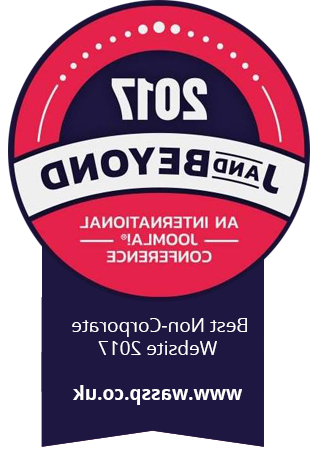
Read on to discover a retargeting definition, all about paid social and Google Ad retargeting, and how to optimise your retargeting advertising campaigns.
What is Retargeting Marketing?
Retargeting does exactly what it says on the tin. These ads target users who are already aware of your brand, have visited your website or otherwise engaged with your ads but have not completed a purchase.
There are several types of retargeting, but pixel-based is the most common form. By placing a JavaScript code, or pixel, onto your website or post-click landing page, every visitor to your site receives a cookie in their browser. After they leave without purchasing, the pixel uses the cookie to let Google AdWords and Facebook know to show the user your retargeting ads in other locations around the internet.
Retargeting keeps the user’s awareness of your brand up. Whether they got distracted by something else, were not in the position to checkout immediately, or hadn’t finished shopping around, retargeting ads make sure your products remain in their consciousness as a viable purchasing option for later.
One advantage of pixel-based retargeting compared to other forms of retargeting is that it activates instantly as soon as they leave your website. The ads are also specific to a particular page on your site and are behavioural, meaning they vary from user to user.
Check out this handy diagram for a visual representation of the retargeted consumer journey:

The Aims of Retargeting Ads
Like most ad campaigns, retargeting campaigns don’t have a single straightforward aim. As any marketer worth their salt will tell you, the potential of ads goes far beyond securing an immediate purchase. Here’s a quick rundown of the aims of retargeting.
Awareness
Target and inform users who have only interacted with your brand on a superficial level to boost awareness.
Perhaps they’ve watched 30 seconds of one of your video ads but not clicked through, or maybe they’ve clicked an ad and visited your website but not browsed any specific products. Use an awareness retargeting campaign to inform them about relevant products, offers, or announcements that might encourage them to give your business another chance.
Unfortunately, a drawback of these campaigns is that they are targeting a much less engaged audience, so lower clickthrough rates should be expected. However, they can work well as a precursor to the next campaign on our list…
Conversion
Conversion campaigns target a more familiar and engaged audience who have interacted with your brand and its products more directly.
The aim of a conversion retargeting campaign is to convert the user into a customer. Therefore, they should have very high clickability and link to a post-click product landing page that convinces them to purchase.
Hubspot advises:
“Conversion campaigns are best used to align a specific list with a clear next step in the flywheel, and can be measured with typical conversion metrics like website clicks, form submission, and cost-per-lead (CPL).”
Buying Journey
Retargeting can help convert users into consumers and make their overall buying journey and experience smoother and more pleasurable. The aim isn’t to get the consumer from A to B as soon as possible but to make that journey as comfortable and easy for them as possible.
For example, suppose you offer an online freebie, such as a downloadable ebook, fact sheet, or tutorial, requiring users to provide their email address and opt-in for marketing communication. In that case, you could then retarget this list of contacts. Perhaps offer them a free trial or other freebies via email to give them a positive experience with your product without the risk of purchasing from an unfamiliar company.
This kind of retargeting works particularly well for service or subscription-based brands and can help make interested parties into paying, loyal customers who might even recommend you to a friend!
Customer Lifetime Value
Retargeting campaigns can be vital to customer win-back. Even the most satisfied customers will inevitably forget to return to repeat their purchase from your brand. The reality of the digital landscape is that consumers are constantly inundated with content from countless brands selling numerous products; even entirely positive purchasing experiences are bound to slip their minds.
Ensure you maximise customer lifetime value by bringing these adrift consumers back into the fold. Remind them of your brand and why they purchased before, drawing them back in with a discount, new product or range, or free shipping offer.
Cart Abandonment
When a customer visits your site, views specific products and even adds them to their cart, it provides the perfect opportunity to retarget.
Remind the consumer of what they’re missing by not checking out, and provide extra incentive to purchase by reminding them of shipping offers, offering a retargeting discount code, and adding a sense of urgency by informing them of low stock levels for the item they’re interested in.
A Typical Retargeting Campaign
A typical retargeting campaign consists of display ads in various formats, including video, images and rich media.
Segmenting your retargeting ads for different audiences will help you better re-attract the retargeted consumer. Ensure that the copy and images are relevant to both a middle-of-the-funnel audience and the product(s) they are interested in.
Optimise Your Retargeting Campaign
Copy
Retargeting ad copy should be actionable, attention-grabbing, engaging and relevant. The call-to-action copy should be clear and simple. It’s essential to keep things brief and to the point, generating urgency by focusing on things like ‘limited stock’ and offering incentives with delivery information or even a retargeting discount code if possible. Place essential information at the start of the copy to avoid it becoming hidden below the ‘See more’ button and potentially missed.
Design
The design of your retargeting ads should be equally engaging and attention-grabbing. Use relevant media, either still images, video or animation and design the CTA button to stand out against its background.
Targeting
Never retarget customers who have already converted! It’s annoying for consumers and risks putting them off your brand. Not to mention, it’s a waste of valuable marketing moolah.
To avoid accidentally retargeting your purchasing consumers, use a burn pixel. This is a snippet of code placed on the post-checkout page, which untags users who go through the entire checkout process, preventing them from falling into your retargeting ad audiences. You can then choose to target them with a different kind of ad campaign that recognises that they have previously purchased and addresses them appropriately.
Audiences
Custom
These audiences are created from users who have engaged with the specific page that your pixel is on, be it a single product or collection.
They aren’t defined by demographics or interests, which allows you to reach a more relevant collection of potential customers and improve conversions.
Lookalike
Lookalike audiences allow you to expand your reach further. They use your custom audiences as a starting point to generate new audiences that meet similar characteristics. The Facebook retargeting pixel can do this for you automatically.









